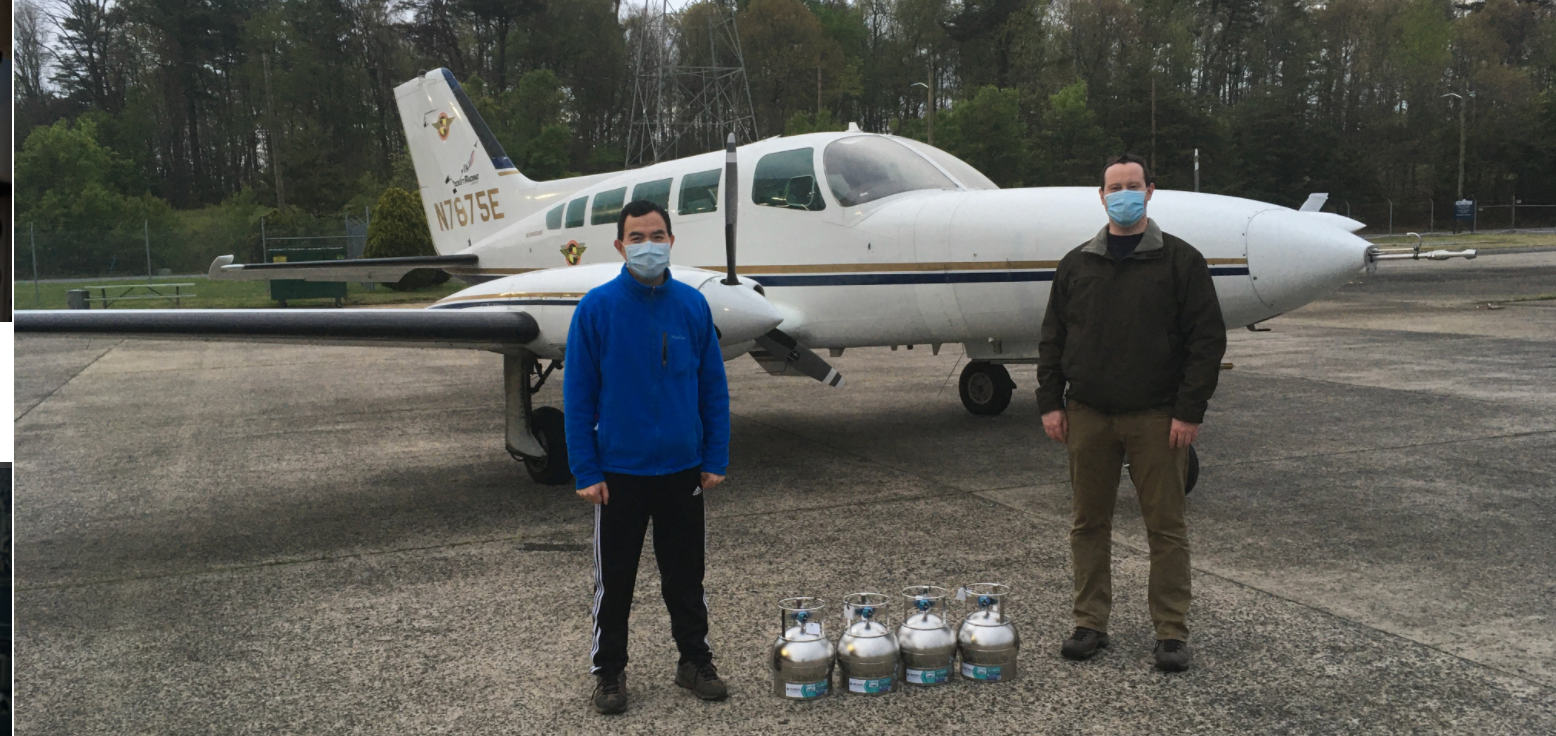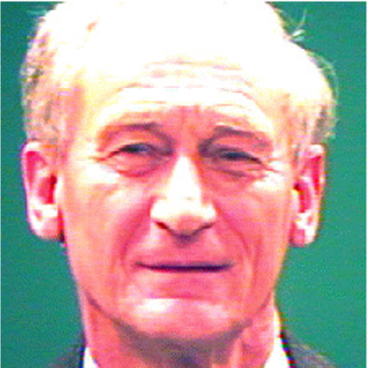Atmospheric chemistry and physics research at the University of Maryland focuses on quantification of the effect of human activity on atmospheric ozone and aerosols and the effects of aerosols on clouds. Interestingly, pollution leads to higher levels of tropospheric ozone (so-called “bad ozone”, because ozone in the lower atmosphere is harmful to human health and agriculture) and, at the same time, pollution also leads to reduced levels of stratospheric ozone (so-called “good ozone”, because ozone in the upper atmosphere protects life from harmful solar ultra-violet radiation). Aerosols, particularly small size particles produced by combustion, pose a significant health risk, especially for children and the elderly. Atmospheric aerosols are also important for the radiative forcing of climate: aerosols caused by pollution can either warm or cool the surface, depending on the composition and optical properties of the particles. Aerosols also have significant effects on clouds and precipitation.
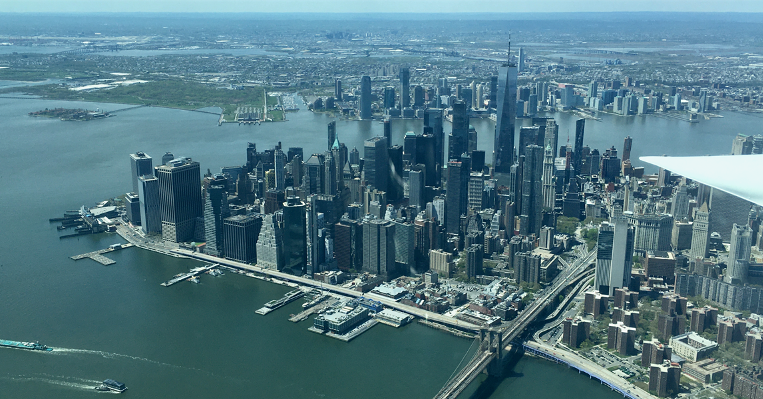
Photo of Lower Manhattan from a NOAA research aircraft on a flight studying the impact of COVID-19 on air quality. May 6, 2020. Image taken by Xinrong Ren.
Description
We conduct in-situ observations of atmospheric constituents, perform retrievals of gases and aerosols from satellite data, and conduct model simulations of atmospheric chemistry on local, regional, and global scales to better understand natural and human influences on atmospheric composition and air quality.
Below we provide observations and forecasts of surface ozone and other trace gases, aerosols composed of particles smaller than 2.5 micron diameter (PM2.5), and total column ozone (reflecting mainly the amount of ozone in the stratosphere). The Air Quality Index and UV Index, which reflect the cleanliness of the air we breathe and the time it takes to sunburn, are derived from the geophysical parameters that are the focal point of our research.
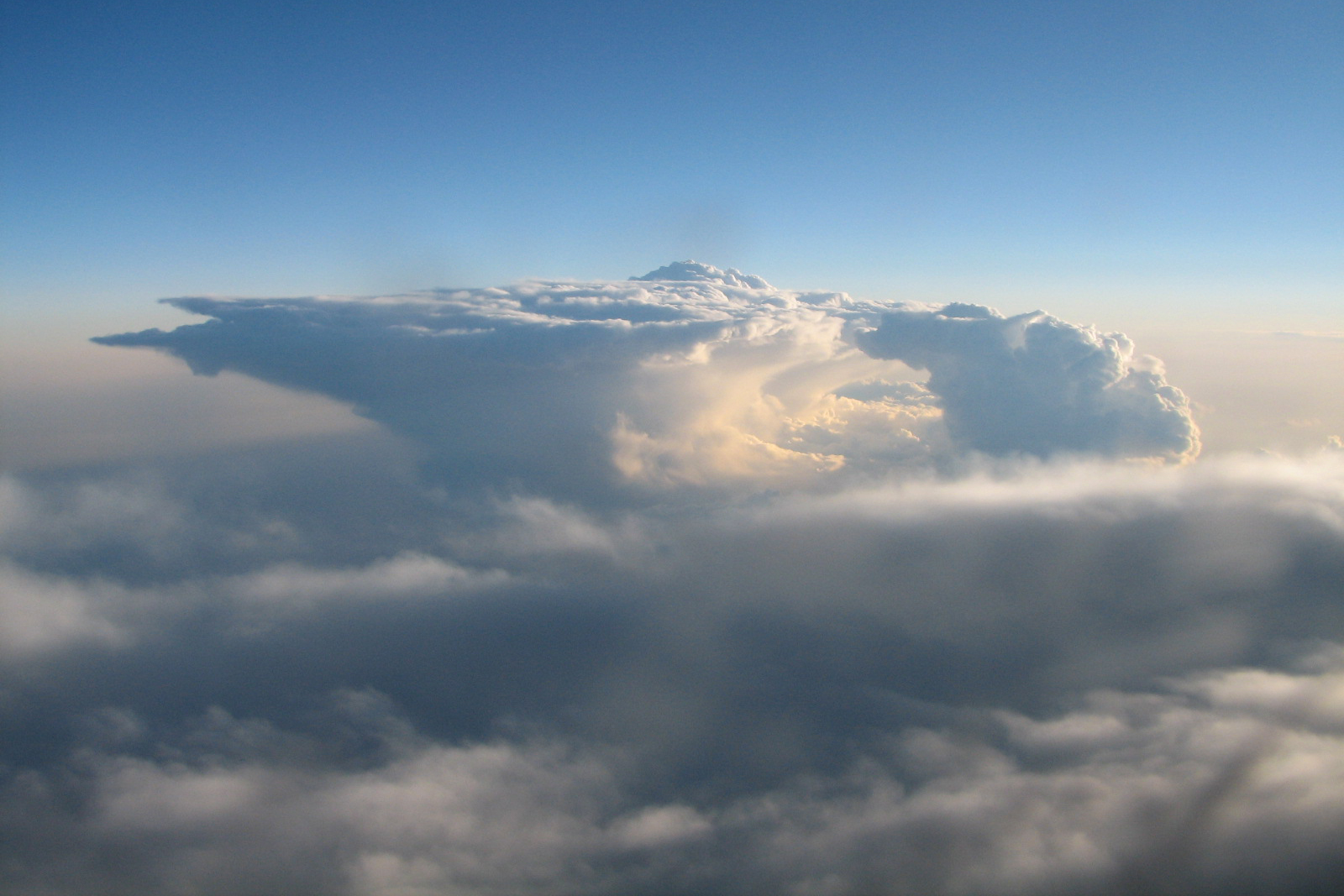
Photo of thunderstorm cloud over Oklahoma taken from a NASA DC-8 aircraft during the Deep Convective Clouds and Chemistry field program. Many research efforts in our group focus on the effect of atmospheric transport and convection on atmospheric composition, including efforts for the upcoming NASA-sponsored DCOTSS campaign and our ongoing efforts for MDE-sponsored RAMMPP and the NIST-sponsored FLAGG-MD projects. Credit: Ken Pickering.
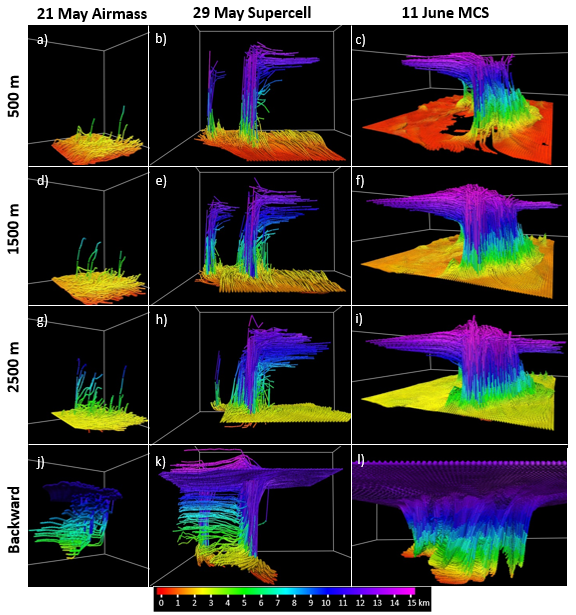
Air parcel trajectories computed from wind fields simulated by high-resolution cloud-resolved WRF model simulations for three storms observed during the Deep Convective Clouds and Chemistry field program. Credit: Yunyao Li and Ken Pickering.
Research Areas
Atmospheric Chemistry and Air Quality
- Observations of local and regional air pollution (Dickerson, Ren)
- Regional air quality modeling (Canty, Dickerson, Allen, He, Wolfe, Salawitch, Pickering)
- Deep convective transport of trace gases and aerosols (Pickering, Allen, Dickerson, Salawitch)
- Production of NOx by lightning (Pickering, Allen)
- Global chemical transport modeling (Allen)
- Ozone in the remote troposphere (Thompson)
- Atmospheric ammonia emissions (Warner)
- Remote sensing of trace gases and aerosols (Kahn, Li)
- Modeling and prediction of future total column ozone (Salawitch)
- Transport of short lived chemical species to the stratosphere (Salawitch)
Climate
- Greenhouse gas observations (Dickerson, Ren)
- Fluxes of greenhouse gases from urban areas and major sources (Dickerson, Ren, Salawitch)
- Modeling of future temperature trends resulting from varied emission scenarios (Salawitch, Canty)
Atmospheric Physics
- Effects of aerosols on clouds and precipitation (Li)
Advising
Advising Faculty
- Allen
- Canty
- Dickerson
- Kahn
- Li
- Pickering
- Ren
- Salawitch
- Thompson
- Warner
- Wolfe
Non-Advising Faculty
- Hudson

External Links
Maryland Air Quality Data
- Current Air Quality, MDE
- Current Air Quality, Clean Air Partners
- Current and Forecast Air Quality, Air Now
Current Surface Pressure Analysis
GEOS-CF forecasts from NASA Goddard GMAO
Potential Research Topics/Projects for Prospective Graduate Students:
- Air Quality Modeling
- Dynamics and Chemistry Of The Summer Stratosphere (DCOTSS)
- East-AIRE (East Asian Study of Tropospheric Aerosols: an International Regional Experiment
- Field Measurements and Modeling of Local Air Quality: RAMMPP (Regional Atmospheric Measurement Modeling and Prediction Program)
- Field Measurements and Modeling of Greenhouse Gases: FLAGG-MD (Fluxes of the Atmospheric Greenhouse-Gases in Maryland)
- Global Carbon Cycle
- Long Island Sound Tropospheric Ozone Study (LISTOS)
- Nitrogen Oxide Production in Lightning: Remote sensing and cloud-resolved modeling
- Remote Sensing of Atmospheric Halogens and Ozone
- Remote Sensing of Stratosperic and Tropospheric Ozone
- Stratospheric Ozone Depletion and Recovery
- Thunderstorms and Air Pollution – field programs and cloud-resolved modeling
Past Dissertations
- Atmospheric Chemistry Research Supervised by Professor Dickerson and by Ross Salawitch
- Department of Atmospheric and Oceanic Science, All Disciplines, Ph.D.
- Department of Atmospheric and Oceanic Science, All Disciplines, M.S.
Courses Relevant to Atmospheric Chemistry
- AOSC 433, Atmospheric Chemistry and Climate (undergraduate level)
- AOSC 434, Air Pollution
- AOSC 620, Physics and Chemistry of the Atmosphere I (AOSC Core)
- AOSC 621, Physics and Chemistry of the Atmosphere II (AOSC Core)
- AOSC 633, Atmospheric Chemistry and Climate (graduate level)
- AOSC 634, Air Sampling and Analysis
- AOSC 637, Atmospheric Chemistry (Advanced)
- AOSC 652, Analysis Methods in Atmospheric and Oceanic Science
- AOSC 675, Carbon Cycle and Climate
Link to Official UMD Schedule of Classes


